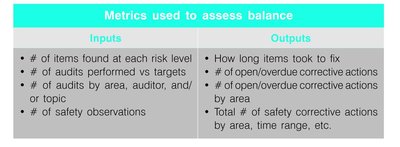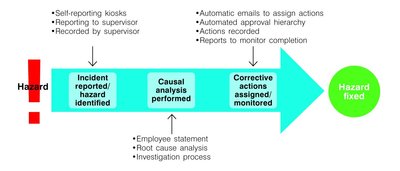Spotlight on safety software
OHS data is a powerful force to influence positive change in the workplace. Insights gained from OHS data lead to process and performance improvements that can positively impact overall health and safety as well as the organisation’s bottom line. However, these outcomes will only be realised if the OHS data is easily accessible, can be analysed quickly and can be converted into meaningful and actionable information.
Currently, many organisations use simple data collection methods to capture and communicate their OHS data (ranging from pen and paper to spreadsheets, memos, Access databases and legacy systems). These methods are fine for gathering rudimentary data, but for more complex information gathering and analysis, they simply aren’t enough.
Most OHS managers will attest to spending hours, if not days, attempting to run basic reports, leaving them without any time or resources to run more insightful ‘big picture’ data. For organisations to truly be proactive in their approach to safety, they need to be serious about how safety data is being managed. That’s where safety software comes in.
A good automated safety software solution provides organisations with a complete toolset to not only capture detailed safety information, but to manipulate that information in useful ways - through reports, graphs and metrics - and help drive performance improvements. It offers the ability to streamline processes across the organisation so that information is tracked and managed in a consistent fashion. Furthermore, automated business processes will ensure that no information is lost and that actions are followed up on in a timely manner.
Take the example of safety culture - one of the more elusive concepts in safety. One way to improve safety culture is through evaluating how effective you are at finding and fixing problems over time.
Example: using software to measure and improve safety culture
OHS professionals will be hard pressed to effectively measure finding and fixing with a piecemeal, simple data management system. To gain useful insights, they’ll need a powerful, flexible and robust solution. Below, three components of good finding and fixing are outlined. The role of an automated safety software system in each of these components is discussed in detail.
Understanding the healthy balance
It is important for an organisation to balance its tendency to find problems with its ability to fix them. If the scales are tipped too much one way or the other, it will have an impact on safety culture. Too much emphasis on finding problems is often an issue if there aren’t the resources in place to fix them. Not enough emphasis on finding hazards is also an issue and likely indicates that problems are flying under the radar.
Understanding the finding and fixing balance requires reliable information on inputs and outputs. A comprehensive safety software system enables you to extract information about how healthy your balance is. Below are some key metrics that a software solution can track.

Standardising an effective hazard identification and correction process
Most large organisations use various methods to identify hazards, including incident investigations, audits, inspections and suggestion programs. However, the data collected is often stored in different places and in multiple formats, leading to poor data integrity and inconsistent business processes. Safety software streamlines your processes.
As an example, here are some of the benefits of using software for a hazard identification process:
- Standardises the collection, storage and retrieval of hazard information.
- Allows anonymous reporting of incidents from stand-alone kiosks; this can kickstart the incident investigation process in the main database.
- Conducts causal analysis of the hazard so preventative or system-wide actions can be considered along with more immediate corrective actions.
- Automates email notifications to assign and follow up on corrective actions.
- Generates reports to monitor completion statuses and ensure fixes don’t fall through the cracks.
Effectively prioritising actions based on risk
Using a safety software system, hazards can be prioritised to ensure resources are used to fix highest risks first. You’ll be able to generate reports that feed into your own standard reporting methods, making it easy for you to communicate risk information to your team. With a good automated system, you’ll be able to:
- Compare all data at once, within one system, instead of comparing inputs that come from across different systems and formats.
- Sort and group risks as needed in order to identify and list risks by area, department, time frame, hazard type, etc.
- Use a dashboard to highlight the reports that are important for your specific business - an effective reminder that keeps priorities front and centre.

Conclusion
Upgrading to a safety software system can seem daunting at first but the benefits are many. Not only can organisations improve the capture of everyday data, but they can begin to move towards a proactive approach to safety. One significant benefit is the ability to measure and improve safety culture, which cannot be done without a sophisticated data management system in place.
With excerpts from ‘How to Measure (and Improve) Safety Culture’ by John Easton of Medgate Inc.
What is new with the European machinery directives?
The EU Machinery Directives are currently being superseded in favour of the Machinery Regulation,...
Integrating standard signals into functional safety
Non‑binary signals such as analog inputs and encoder readings are very common and should be...
Light curtain or safety laser scanner?
Safety light curtains and safety laser scanners are the two most common machine protection...











